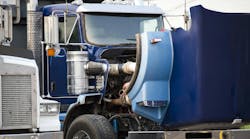The first step in determining which data you need is to define what you are trying to measure or improve. If you are focusing on financing equipment at the optimal life cycle for the lowest total cost of ownership, there are a number of key data points to consider before you can decide which data you will need to study.
- A complete inventory of what is currently in your fleet. Before you can determine if you need to replace existing equipment or add new equipment, make sure you have a complete inventory of your existing assets including information such as year, make, model, in service date, odometer reading, and more.
- Maintenance and repair information. This data is crucial for determining the correct life cycle. Look at all costs by VMRS code over the life of each asset and also look at spending trends across the fleet. This allows you to identify pain points and can help you determine asset specs and may or may not justify warranty for any new equipment purchases.
- Fuel economy. You need to know the fuel efficiency of existing assets since fuel is a significant portion of the cost of operating a fleet. Increases or decreases in fuel efficiency can have a big influence on operating costs.
- Financial factors. You also need information on the availability of financing, interest rates, and rate of inflation as well as the cost of the new equipment.
- Resale information. What is happening in the used truck market will have a direct bearing on the cost of moving in and out of equipment.
Once you have amassed all this data, you can use it to help determine optimal life cycle and the best replacement time for each individual asset. This is based on total cost of ownership, which includes:
- Utilization
- Cost of the new equipment
- Year-over-year inflation rate
- Used truck values
- Life to date maintenance and repair costs
- Fuel economy of existing vehicles
- Fuel economy trends (improvement and degradations)
- Anticipated fuel economy of new assets
- Fuel costs
- Interest rates
Just remember that asset replacement cycles are not “set and forget.” Review all this information on a quarterly basis and tweak your plan as current market conditions dictate. For example, if new trucks come on the market that are getting phenomenal fuel economy, you might be justified to move out of existing assets sooner. If an asset is under utilized throughout its life or has been experiencing low maintenance costs, that might be a reason to extend asset life. There are a number of key data points you will need to study to get the answers you need to best manage your fleet.



